by C. Elkins, OK Math and Reading Lady
This is part 5 of a series of fractions posts. Thanks for sticking around! Through explorations with fraction manipulatives, pictures, and drawings, we hope students begin to notice there may be different ways to express the same area using fractional terms. To cut a sandwich into halves and eat one of the halves is the same as cutting the same sandwich into fourths and eating two of the fourths. Read on for several freebies about equivalent fractions.
Students can gain experience finding equivalent fractions using models in several ways: Fraction strips, area models, set models, bar / length models, and number lines. Then with a strong understanding using concrete and pictorial models, the student is ready to apply paper-pencil methods to name equivalent fractions. But remember to use the same size whole: As in this picture using pattern blocks, 2/3 of a trapezoid is NOT the same as 2/3 of a hexagon.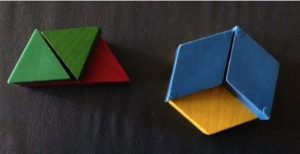
Fraction Strips: If you don’t have sets of fraction strips, here is a free resource Fraction, decimal and percent strips charts via Kim Tran (TPT). Commercially available strips are also nice. But, with some 1″ strips of construction paper, students can create their own and probably learn a lot about the relationship between halves, fourths, and eighths as well as thirds, sixths, and twelfths in the process of partitioning and cutting them.
TIP: Make sure students know how to read a fraction strip chart. A couple of years ago I was working with a third grade class and assumed they could readily see that 5/10 was equivalent to 1/2. But after confusing looks, I realized that I needed to physically show them how to follow a line vertically down the chart to find other fractions that were in line (by placing a ruler or long pencil along the vertical line). Another example. “To find another fraction equivalent to 1/3, find the line at the end of the 1/3 section and trace it vertically down the page to see if there are other fractions that stop along that same line. You should see in the sixth’s line that 2/6 lines up, and in the ninth’s line that 3/9 lines up and in the twelfths line that 4/12 lines up.”
After cutting and labeling strips, then explore equivalent fractions (those with the same size length). Students should be able to generalize that different fractions can used to represent the same area.
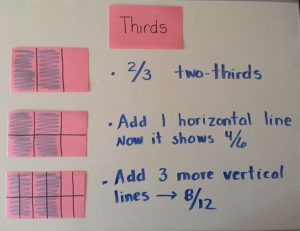
Area models: By covering or partitioning shapes, students should notice that even though the same area is covered or shaded, the number and size of the parts can change.
Set models: Here is a good illustration of equivalent fractions using a set model. This is also a pictorial initiation to ratio (for every 1 red, there are 3 yellow). Start with a basic fraction (such as 3/4). Repeat the same fraction underneath to see now that 3/4 is equivalent to 6/8. Keep repeating. Reverse the steps to simplify a fraction.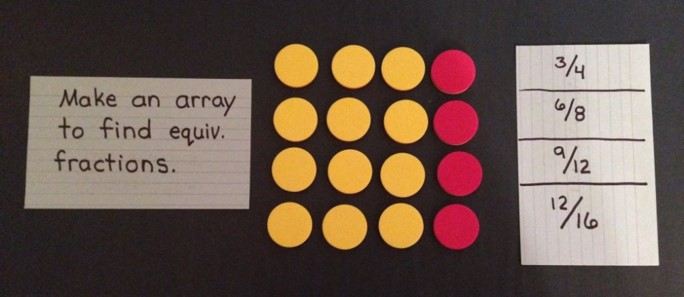
Bar / length models: These can be modeled using concrete objects such as color tiles or cubes. Also, drawing 2 bars and partitioning them provides a good pictorial model. See Fractions Part 3 about how to help students partition shapes equally.
- Notice 1/2=2/4=4/8
Number lines: Use a chart showing various number lines (similar to the fraction strips chart) before asking students to draw their own. When using number lines to find equivalent fractions, they need to draw number lines of the same length, one directly above the other. Then partitioning them should be done in a similar way that bar models are partitioned. Start out with fractions with “friendly” companions (halves with fourths or eighths; thirds with sixths or ninths).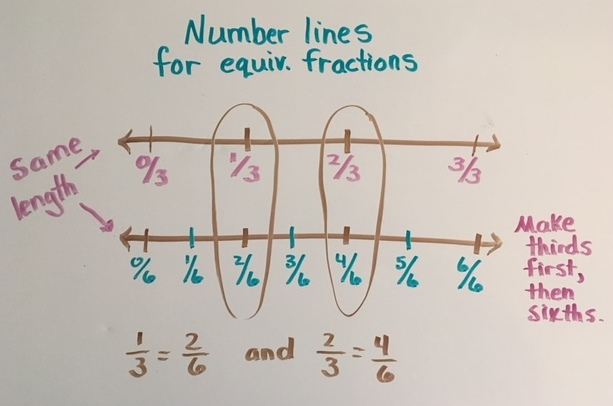
TIP: Help students see the “hidden” equivalent fractional parts. Sometimes students look at a picture (a rectangle, for example) that has two of eight parts shaded (see picture below). Clearly one fourth of the shape is shaded, but students only see the 2/8 because they have been taught to count the total parts (denominator) and the shaded parts (numerator) to describe the fraction. When asked, “Is there another fraction to describe the shaded part?” they get busy trying to use a paper-pencil method to reduce to lowest terms. Of course, they will end up with 1/4 – but wouldn’t it have been simpler to notice the fourth of the whole shape that was shaded? Practice using manipulatives and looking at pictures should help over time.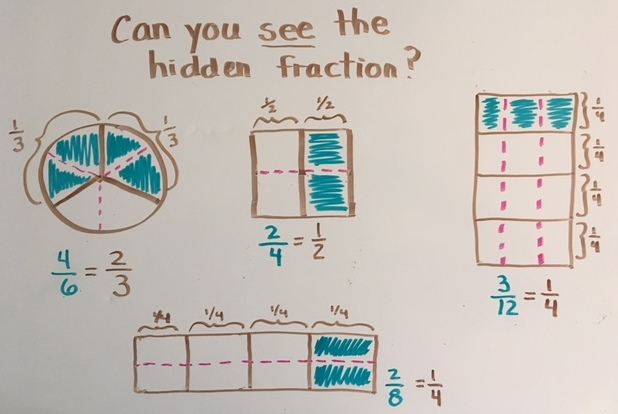
Here is link to another FREE resource (via TPT). Capture 4 Equivalent Fractions by Donna Boucher @ www.mathcoachscorner.com It is a capture game emphasizing equivalent fractions. Hopefully it helps students see “hidden” equivalencies and common benchmark fractions.. It has a Christmas theme on the display, but a non-Christmas game board is available in the download.
Equivalent Fractions paper-pencil method (after lots of experience with making equivalent fractions the above mentioned ways):

2/3 x 2/2 = 4/6 and 2/3 x 4/4 = 8/12
To make an equivalent fraction, most of us would show students to multiply the numerator and denominator by the same number (such as 2/3 x 2/2 = 4/6). It is helpful to explain that this “same number” is a version of 1. Remind them that a fraction with the same numerator and denominator are ways to express the whole number 1. So multiplying a fraction times some version of 1, will result in an equivalent fraction just like 5 x 1 = 5 or 13 x 1 = 13.
Without this understanding, students often have misconceptions that the fraction they are creating is larger since the numerator and denominator are larger.
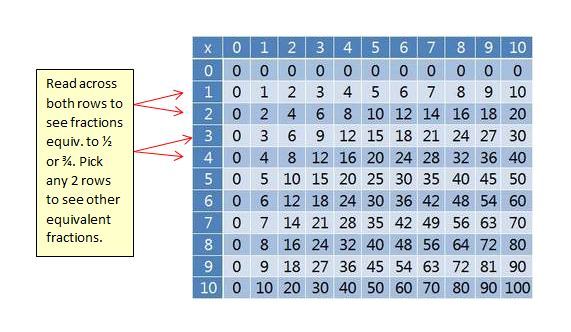 Did you ever notice that two rows on a standard multiplication chart show equivalent fractions? Find the row with 1 and the row with 2. Follow those two rows across and you will see fractions equivalent to 1/2: 2/4, 3/6, 4/8, 5/10, etc. Try this: Find the rows with 3 and 4 to see fractions equivalent to 3/4: 6/8, 9/12, 12/16 and more.
Did you ever notice that two rows on a standard multiplication chart show equivalent fractions? Find the row with 1 and the row with 2. Follow those two rows across and you will see fractions equivalent to 1/2: 2/4, 3/6, 4/8, 5/10, etc. Try this: Find the rows with 3 and 4 to see fractions equivalent to 3/4: 6/8, 9/12, 12/16 and more.
This process to name equivalent fractions is also needed when adding or subtracting fractions with unlike denominators. In this case finding the LCM (least common multiple) is helpful. More about this process in a future post about number operations with fractions.
FREE sorting game: Equivalent fractions True or False? Click HERE for your FREE copy.
- Directions
- Sort cards
Another great partner game to play is Fraction War.  Use a regular deck of playing cards (either discard the 10s and face cards or assign them a value). Instead of turning over 1 card as in a normal game of War, each player turns over 2 cards and places them one above the other. Then compare the fractions. The player with the largest fraction, keeps all 4 cards. You can also use the decorative set of free fraction cards from www.mathcoachscorner.com linked HERE to play this game. Her freebie also includes a page of fraction number lines. Click HERE for my free Fraction War blank recording sheet (pictured) in which students must explain which method they used to compare their fractions. This also goes along with my previous post about comparing fractions.
Use a regular deck of playing cards (either discard the 10s and face cards or assign them a value). Instead of turning over 1 card as in a normal game of War, each player turns over 2 cards and places them one above the other. Then compare the fractions. The player with the largest fraction, keeps all 4 cards. You can also use the decorative set of free fraction cards from www.mathcoachscorner.com linked HERE to play this game. Her freebie also includes a page of fraction number lines. Click HERE for my free Fraction War blank recording sheet (pictured) in which students must explain which method they used to compare their fractions. This also goes along with my previous post about comparing fractions.
To simplify a fraction (which also produces an equivalent fraction), the procedure is to divide the numerator and denominator by a version of 1 (such as 2/2, 3/3, 4/4, etc.) until these conditions are met (aka lowest terms):
- The numerator is one (1/4, 1/3, 1/6), or
- The numerator is a prime number and is NOT a factor of the denominator, Remember a prime number is a whole number that is only divisible by itself and 1. (The first few are 2, 5, 7, 11, 13, 17, 19, 23, etc.). The other numbers are considered composite because they can be decomposed into other factors besides itself and 1 (4 has factors of 1, 2, 4; 10 has factors of 1, 10, 2, 5).
- Stated another way: The numerator and denominator can no longer be divided by the same whole number exactly or evenly (other than 1).
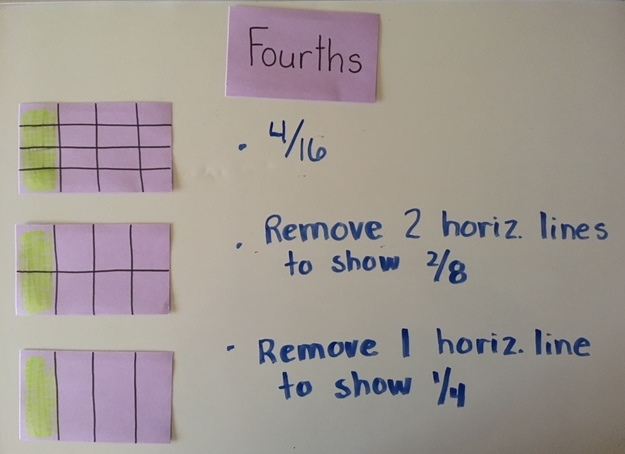
4/16 divided by 4/4 = 1/4 or 2 steps with 4/16 div. by 2/2 = 2/8 and then 2/8 div. by 2/2 = 1/4
TIP: If both the numerator and denominator are even, you are safe to divide each by 2. This may need to be repeated is the result still shows 2 even numbers in the num. and denom. positions.
Another efficient way to do this is to identify the greatest common factor (GCF). This is often quite difficult for students, especially if they are not fluent with multiplication or division facts. There is a great video on learnzillion.com about using a tree diagram and a Venn diagram to find both the GCF and the LCM. Here’s the link: I will also go into more detail about this in a future post about number operations with fractions.
Enjoy! Do you have any equivalent fraction tips you would like to pass along? We would love to hear from you!
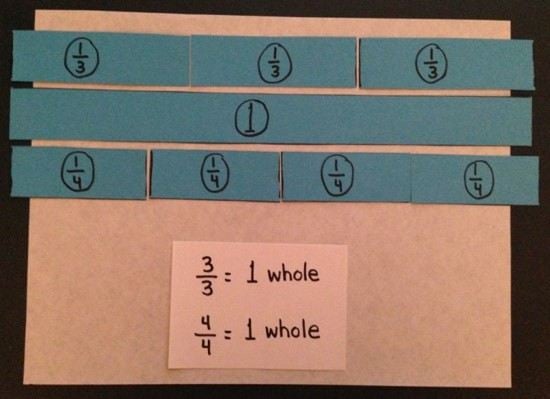
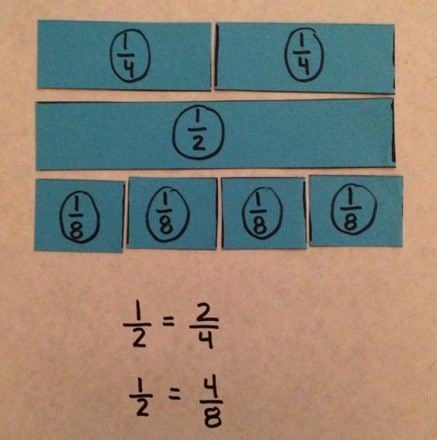
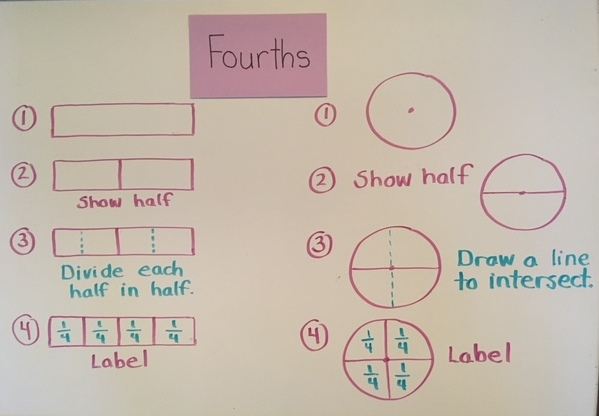



Do you have a resources on TpT that you have personally made? Just curious. You create so many awesome things! I love reading your blog! On a side note, I ordered a kit for our students to make one of the books you showed us! I am excited about it and yet nervous that we won’t be able to get it finished in time.
Thank you! I have not taken the leap to TPT yet. That might be a summer project. Until then, everything I provide is absolutely FREE!